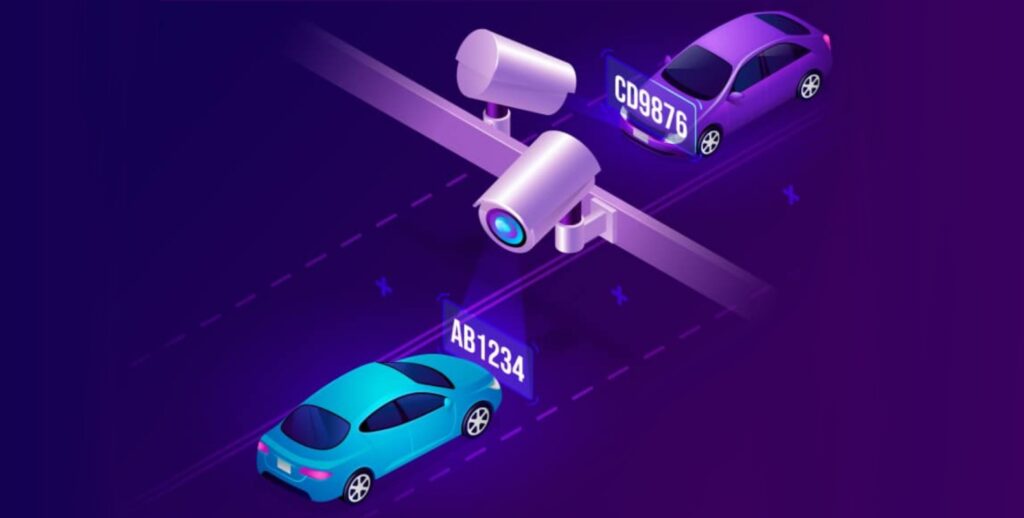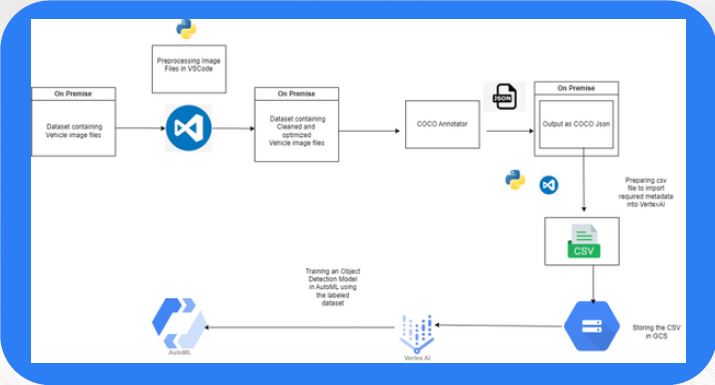- July 28, 2023
Enhancing Law Enforcement with Vehicle Number Plate Detection in Surveillance Footage

Problem Statement
The police department needs an efficient solution to annotate license plates from surveillance footage accurately. Accurate annotation is vital for identifying traffic rule violators, hit-and-run vehicles, and other criminals. By developing an accurate annotator, the department aims to streamline the labeling process, ensuring effective law enforcement, improved public safety, and enhanced crime investigations.
Methodology
Data Collection: Collect a dataset of license plate images from video taking it as frames and images. Include variations in lighting conditions, and different camera angles to ensure robustness.
Data Pre-processing: Cleaning the collected data by resizing images for consistent and high-quality input for the annotation system.
Data Labeling and Annotation: Manually labeling and annotating the license plate regions in the images to ensure accurate identification.
Data Cleaning: Perform cleaning operations on the CSV data, such as removing duplicates, handling missing values, and correcting data types.

Model Training: Utilize the annotated license plate data to train a machine-learning model for license plate detection.
Model Evaluation: Evaluate the trained model’s performance using appropriate metrics such as precision, recall, and mean average precision (mAP).
Testing and Validation: Perform thorough testing and validation of the deployed model using a separate test dataset.
Results
- Upon deployment of the vehicle number plate detection model, significant improvements in law enforcement capabilities were observed.
- Demonstrated high accuracy in identifying and extracting number plates, even in challenging conditions such as low light or occluded views.
- Drastically reduced the time required for manual review and increased the efficiency of investigations.
- The model’s high precision and recall rates contributed to improved traffic law enforcement, rapid identification of suspects, and enhanced crime-solving capabilities.
Project Architecture

Our Approach
Vehicle Images on Premises:
- Collect a dataset of Vehicles with Number plate images on your local system.
COCO Annotator Tool:
- Label and annotate the images using COCO Annotator Tool to identify the number plate from the vehicle.
Google Cloud Platform (GCP) Bucket:
- Create a GCP bucket to store the Vehicle with Number plate images.
Exporting Labeled Data:
- Export the labeled data from COCO Annotator Tool in JSON format.
- The exported file should contain the metadata of each labeled image.
Preparing Vertex AI-Compatible Metadata:
- Transform the exported file into a format compatible with Google Cloud’s Vertex AI.
- Modify the metadata file to adhere specific format required by Vertex AI for importing labeled data.
Vertex AI Object Detection Model Training:
- Utilize Vertex AI’s AutoML capabilities to train an object detection model.
- Use the labeled dataset, stored in the GCP bucket, as the training input for the AutoML model.
Testing and Accuracy Evaluation:
- Provide the sample images as input to the trained object detection model in order to evaluate its performance and accuracy.